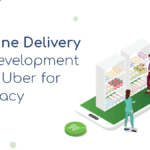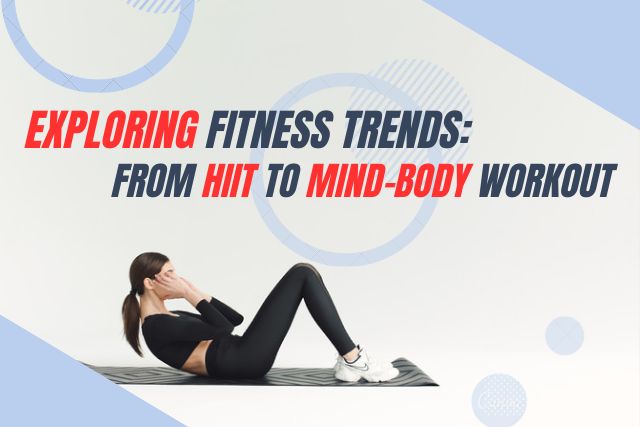
The landscape of conferences has dramatically transformed over the past few years, with virtual conferences becoming a significant part of the professional world. Whether driven by the need to reach a global audience, reduce costs, or adapt to health and travel constraints, virtual conferences offer numerous benefits. As we step into 2024, hosting a successful virtual conference requires a blend of technology, planning, and engagement strategies. This guide will walk you through the essential steps and best practices to ensure your virtual conference is a resounding success.
1. Define Your Goals and Audience
Firstly you’ll need to set your goals and clarify the right audience.
Setting Clear Objectives
Before diving into the logistical details, it’s crucial to define the purpose of your virtual conference. Are you aiming to educate, network, generate leads, or showcase new products? Clear objectives will guide all subsequent decisions, from the choice of platform to the structure of your sessions.
Identifying Your Target Audience
Understanding who your audience is will help tailor the content, marketing strategies, and engagement techniques. Consider their professional backgrounds, interests, and technological proficiency. This knowledge ensures the conference content is relevant and engaging for your participants.
2. Choosing the Right Platform
To host a decent conference, you will also need to choose the right platform for your event.
Evaluating Platform Features
Selecting the right platform is pivotal. Look for features that align with your goals, such as:
- Interactive Capabilities: Chat functions, Q&A sessions, polls, and breakout rooms.
- Networking Tools: Virtual networking lounges, 1:1 video meetings, and participant directories.
- Analytics and Reporting: Track attendee engagement and gather feedback.
- Integration: Compatibility with CRM, marketing tools, and social media.
- Security: Ensure data protection and secure access controls.
Popular Platforms for 2024
Selecting the right platform for your structured virtual event is pivotal. Consider platforms like Zoom, Microsoft Teams, Hopin, and Whova, which are popular for their robust features and user-friendly interfaces.
3. Planning and Content Creation
The next step is planning the event as well as the creativity as in what content will you present and such.
Designing the Agenda
Create a detailed agenda that includes keynote speeches, panel discussions, workshops, and networking sessions. Balance the schedule to prevent fatigue, incorporating breaks and varied session types.
Engaging Content
Content is king. Work with industry experts to deliver high-quality presentations and discussions. Interactive elements like live Q&As, polls, and virtual roundtables can significantly enhance engagement.
Speaker Preparation
Ensure your speakers are comfortable with the technology and format. Conduct rehearsals to troubleshoot any technical issues and refine their presentations.
4. Marketing Your Virtual Conference
We all know how crucial marketing is in today’s world, therefore it’s another crucial step for hosting the proper event.
Building a Buzz
A comprehensive marketing strategy is essential to attract attendees. Use a mix of email marketing, social media campaigns, influencer partnerships, and targeted ads. Highlight key speakers, session topics, and unique selling points.
Utilizing Social Media
Leverage social media platforms to create anticipation. Regular updates, speaker spotlights, and behind-the-scenes content can build excitement. Create a unique hashtag for your event to foster online conversations and community building.
5. Engaging Participants During the Conference
Once you’ve done everything above, your audience mustn’t fall asleep during your event, so try to make the conference engaging and interesting to the participants.
Interactive Elements
- Engagement is vital for a successful virtual conference. Incorporate interactive elements such as:
- Live Polls and Q&As: Encourage real-time interaction during sessions.
- Breakout Rooms: Facilitate smaller group discussions and networking.
- Gamification: Introduce leaderboards, challenges, and rewards to motivate participation.
Networking Opportunities
Networking is a key reason people attend conferences. Offer virtual networking lounges, speed networking sessions, and matchmaking based on interests or professional backgrounds to replicate in-person networking experiences.
6. Technical Considerations and Support
Things like internet connection, camera and other components for the video call need to be always working to have a smooth conference.
Ensuring Technical Smoothness
- Technical glitches can mar the experience. Ensure you have:
- Reliable Internet Connection: High-speed internet is non-negotiable.
- Technical Support Team: Provide real-time support to address any issues participants might face.
- Back-Up Plans: Have contingency plans for technical failures, including recorded sessions and alternative communication channels.
Accessibility
Ensure your conference is accessible to all. This includes providing closed captions, and sign language interpreters, and ensuring the platform is navigable for those with disabilities.
7. Post-Conference Follow-Up
Once the conference is over, it’s important to get feedback and thoughts on it from your audience.
Gathering Feedback
Collect feedback from attendees, speakers, and sponsors. Use surveys to understand what worked well and areas for improvement. This data is invaluable for future events.
Content On-Demand
Offer recorded sessions and materials for on-demand access. This extends the life of your content and provides value to those who couldn’t attend live.
Analyzing Data
Leverage analytics from the conference platform to gauge engagement levels, popular sessions, and attendee demographics. This information can inform your marketing and content strategies for future events.
Maintaining Engagement
Keep the momentum going by engaging with attendees post-conference. Share highlights, key takeaways, and updates on future events. Maintain an active community through social media groups, newsletters, and follow-up webinars.
8. Legal and Compliance Considerations
Navigating the legal and compliance landscape is essential to protect your virtual conference and ensure a seamless experience for all participants.
Data Privacy and Security
Ensuring the privacy and security of attendee data is paramount. Comply with regulations such as GDPR (General Data Protection Regulation) or CCPA (California Consumer Privacy Act), depending on where your audience is located. Use secure platforms and encryption to protect sensitive information.
Licensing and Permissions
Obtain necessary licenses and permissions for any content used during the conference, including images, videos, and music. Ensure all content is legally compliant and that you have the right to broadcast it to your audience.
Accessibility Standards
Adhere to accessibility standards such as the Web Content Accessibility Guidelines (WCAG) to ensure your conference is inclusive. This may involve providing transcripts, and captions, and ensuring the platform is usable for attendees with disabilities.
Hosting a virtual conference in 2024 involves a delicate balance of planning, technology, and engagement strategies. By setting clear goals, choosing the right platform, creating engaging content, and focusing on participant interaction, you can create a successful and memorable virtual conference. As technology continues to evolve, the potential for innovative and impactful virtual events will only grow. Embrace these opportunities to connect, educate, and inspire your audience in the digital realm.








